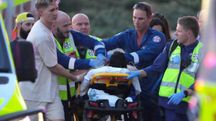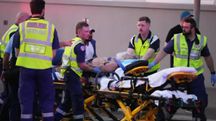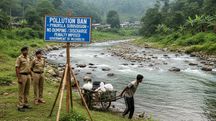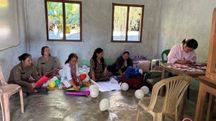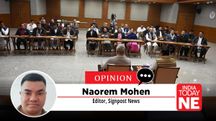NASA's expedition 71 astronauts prepare for crucial research on international space station
NASA's Expedition 71 astronauts are ready to embark on crucial research on the International Space Station. The research includes studying neuro-inflammation, a common element in neurodegenerative disorders, and the impact of microgravity and UV radiation stress on plants.

NASA's Expedition 71 astronauts are set to embark on crucial research aboard the International Space Station (ISS). The team, consisting of Michael Barratt, Matthew Dominick, Jeanette Epps, and Tracy C. Dyson, is scheduled to reach the space station in February and March.
One of the key studies, named "Human Brain Organoid Models for Neurodegenerative Disease & Drug Discovery" (HBOND), focuses on understanding neuro-inflammation, a common factor in neurodegenerative disorders. Using patient-derived stem cells, researchers create "organoids" from individuals with Parkinson's disease and primary progressive multiple sclerosis. The results could enhance diagnostics, offer insights into aging effects, speed up drug discovery, and pinpoint therapeutic targets for neurodegenerative diseases.
Moreover, these brain organoid models may provide insights into the impact of extended spaceflight on the brain, aiding in the development of countermeasures for astronauts.
Another significant study, "Plant Responses Against the Stresses of Microgravity and High Ultraviolet Radiation in Space" (Plant UV-B), explores how microgravity and UV radiation stress affect plants at various levels. The findings could advance our understanding of plant growth in space, paving the way for improved plant cultivation technologies for future space missions.
Recognizing the challenges of weightlessness on the human body, the astronauts will also investigate the use of thigh pressure cuffs to counteract the shift in body fluids towards the head. This phenomenon, known as 'Spaceflight Associated Neuro-ocular Syndrome' (SANS), can lead to changes in eye structure and vision. The study aims to determine if thigh cuffs could be a simple solution to protect astronauts from SANS and other health issues during future missions to the Moon and Mars. Additionally, these cuffs might find applications in treating conditions on Earth, such as fluid accumulation in the head due to prolonged bed rest or diseases.
This expedition marks a significant step forward in space research, with the potential to improve both space exploration and healthcare on Earth. The diverse studies on neurological health, plant growth, and fluid dynamics showcase NASA's commitment to advancing scientific knowledge for the benefit of humanity.
Copyright©2025 Living Media India Limited. For reprint rights: Syndications Today
